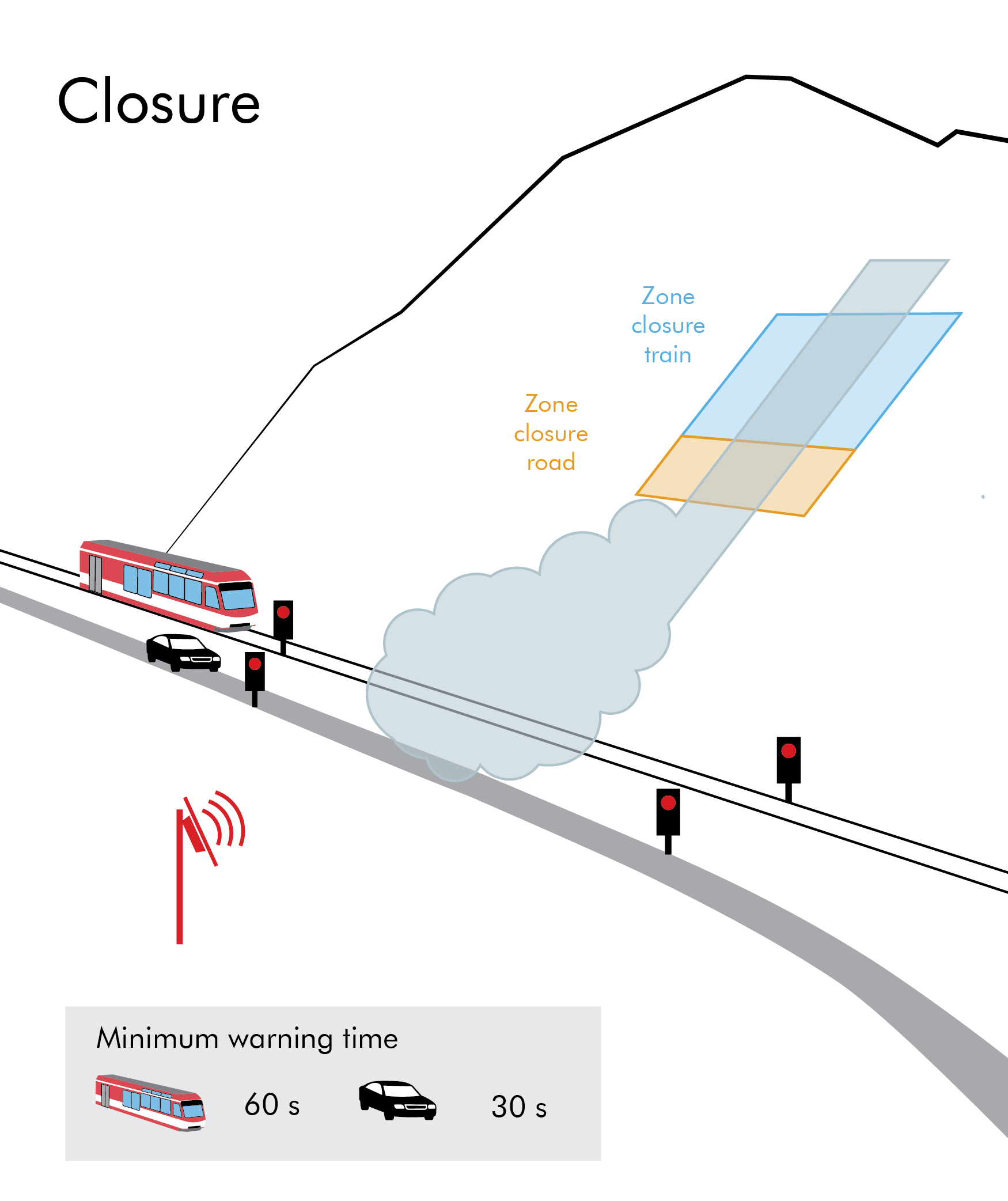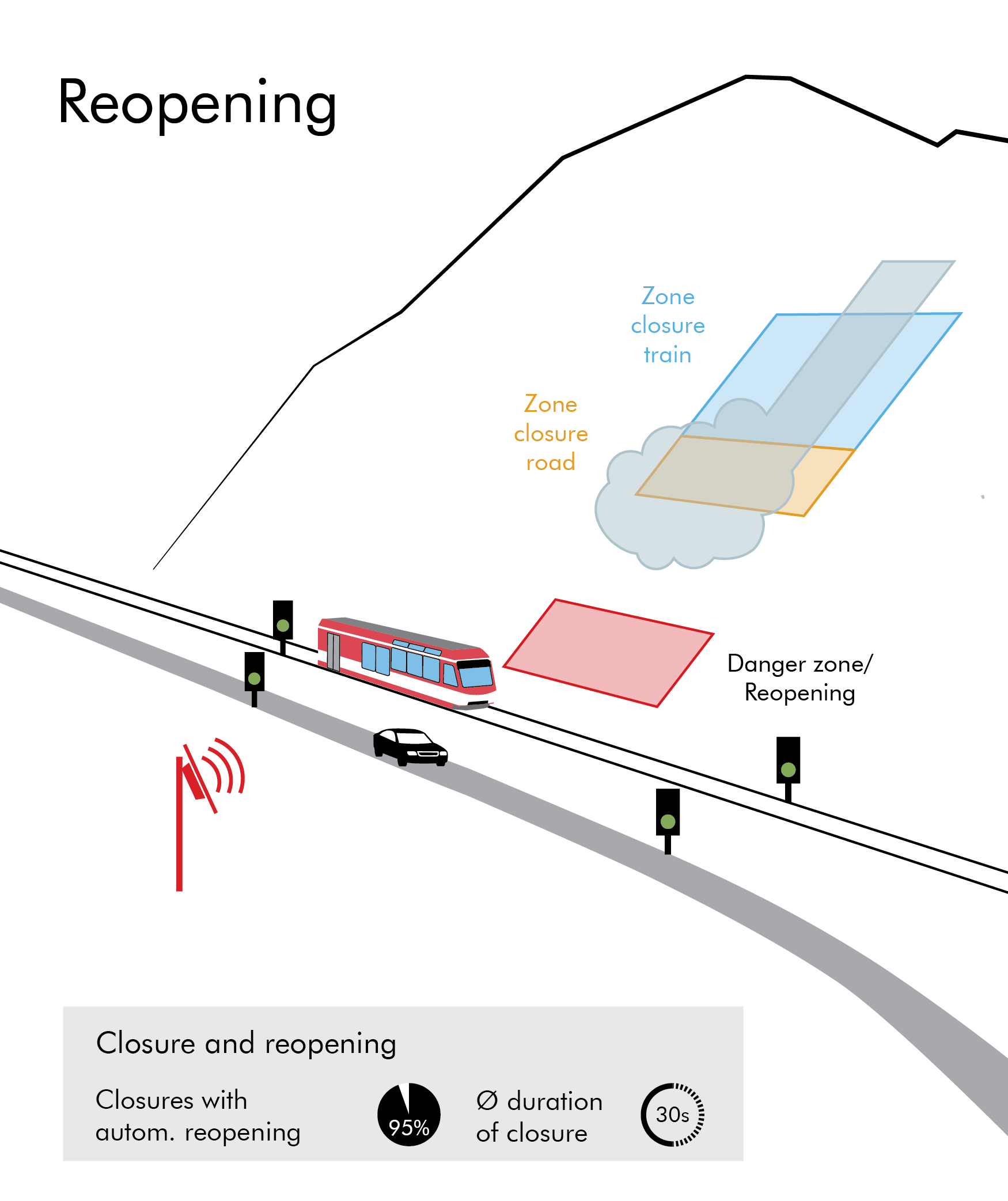Avalanche detection with automatic closure and reopening of road and rail
In natural hazards, the implementation of alarm systems with automatic road or rail closures requires the consideration of a number of important aspects. The aim is to keep closing times of transport routes as short as possible while at the same time ensuring safety at all times. Depending on the frequency of an event, this can be a challenging task.
The avalanche alarm system in Randa illustrates this problem clearly: the Bis glacier above the village of Randa drops over a steep edge into the Matter valley generating frequent small glacier collapses. Subsequent ice avalanches are not unusual. However, with a lot of fresh snow, the collapses can grow into large snow avalanches that reach the valley bottom threatening both the cantonal road and the Matterhorn Gotthard Railway. However, this happens relatively rarely – depending on the snow and weather situation only a few times per winter. But smaller events may occur several times a day.
5.2.2019: Large avalanche in Randa (faster video playback)
This is how the road and rail closure in Randa works
Our comprehensive glacier monitoring system includes an avalanche radar for the real-time detection of avalanches of various sizes in the glacier area between 1500 and 3300 metres above sea level. After a test winter (2017/18) and the evaluation of more than 500 events, we connected the system to the existing road and rail traffic lights at the end of January and activated automatic closure and reopening. The challenge was to find a trade-off between the number of closures and “false alarms”. By “false alarm” we understand in this context when an avalanche correctly triggers a closure without actually reaching the danger zone (i.e. railway tracks, road). The following graphics give an overview of the implemented closing and opening sequence.


Data analysis revealed that the greatest avalanche activity occurs in the area of the glacier escarpment. Most avalanches start there and terminate shortly below, only a few large avalanches reach the valley floor. We defined two alarm zones with different warning times in order to close the railway and road early enough and at the same time keep the number of closures to a minimum. Upon detection of an avalanche in the upper alarm zone, the radar closes the railway tracks (60 seconds warning time). Should the avalanche also reach the alarm zone for the road, the radar closes the road section as well (30 seconds warning time). Automatic reopening happens when the avalanche did not reach the danger zone (95% of cases during the test winter). In the remaining 5% of cases, the avalanche reached the danger zone while the tracks and road were closed. The closure must be cancelled manually after a condition check of tracks and road. This can be done, for example, remotely via the webcam on the online data portal. The webcam offers convenient live views of the situation at any time, even at night thanks to infrared floodlights.
First use after only a few days
On 5 February 2019 at 10:29 a large avalanche occurred after a glacier collapse and triggered the automatic closure of the railway and road (video above or here). The avalanche radar detected the starting avalanche at 10:29:46 a.m., 15 seconds later the avalanche reached the alarm zone of the train, another 37 seconds later that of the road. By the time the powder cloud reached the tracks, 2 minutes 17 seconds had passed since closure. The webcam installed at the railway crossing recorded the avalanche (video below or here). A train coming from Visp stopped in front of the traffic light and the train driver recorded the avalanche from the driver’s cab (20 minutes).
